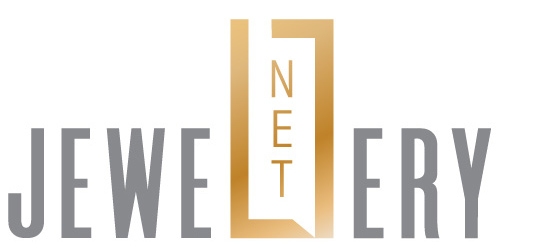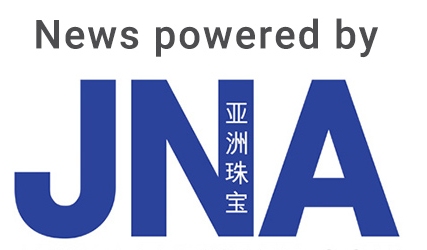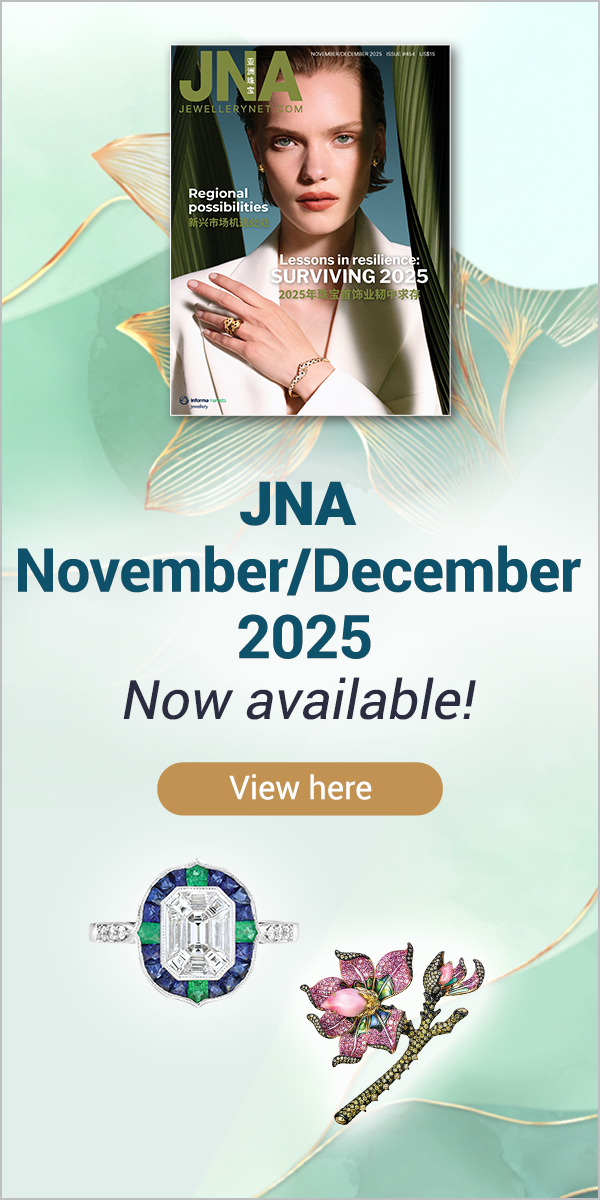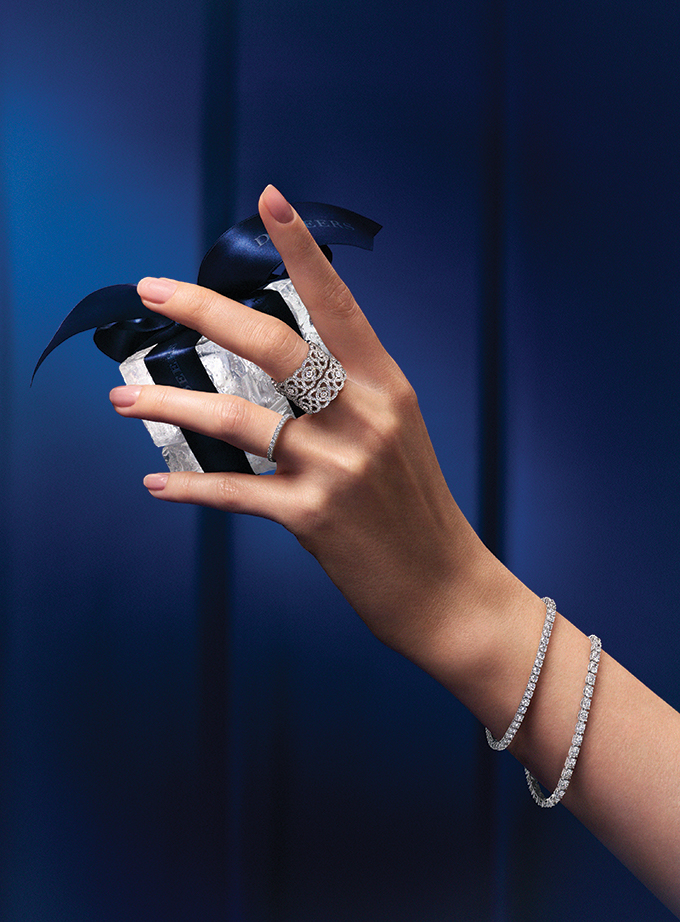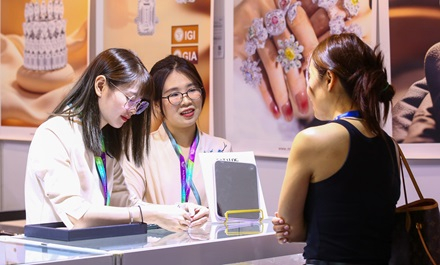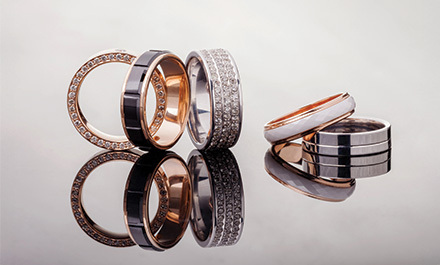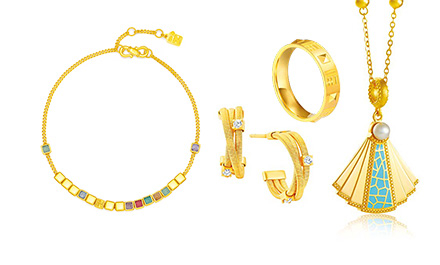Growth opportunities abound for diamond jewellery in China, fuelled by rising demand in key and newer demographics. Targeted consideration of their preferences and purchasing habits can unlock the potential of these promising customer segments.
This article first appeared in the JNA January/February 2024 issue.
While diamonds may have lost a bit of their shine in China since the pandemic, the market still holds vast potential for the diamond trade, with key and new segments mainly requiring focused strategies to deliver brilliant results.
According to De Beers Group’s 10th annual Diamond Insight Report, demand for diamonds is poised to increase as China’s economic outlook improves. It noted that up to 200 million Chinese consumers are set to enter the middle class by 2030 and household disposable incomes are projected to rise by more than a third over the same period.
Though natural diamonds rank among Chinese consumers’ top three most-desired luxury purchases, there is a substantial gap between intent to acquire and actual acquisition rates.
The De Beers report, which surveyed 11,000 Chinese women in 2023, found that while 33 per cent of respondents in Tier 1, 2 and 3 cities expressed the desire to acquire diamonds the following year, only 4 per cent had done so in the 12 months prior. Moreover, only 6 per cent of the respondents with a monthly household income over RMB100,000 (around US$14,150) made a purchase.
This gap between intention and actual purchase represents a significant opportunity for the diamond industry, said De Beers Group Senior Vice President of Strategy Development Esther Oberbeck, who leads the company’s insight generation programme.
Romantic gifts
The most effective way to convert purchase intent into sales is to promote diamonds for romantic-love gifting, Oberbeck remarked. After all, Chinese women view diamonds as their third most preferred gift, after gold jewellery and travel. And 80 per cent of people who bought diamond jewellery as non-bridal gifts saw these as a testament to everlasting love.
“The global diamond industry is focused on romance, but more effort must be made in China to promote diamonds as romantic gifts. There is still a very large core of women in China that would love to receive diamonds as a special token of love. This presents massive opportunities if properly addressed,” she explained.
Preferences differ slightly among Chinese consumers in households earning over RMB30,000 (around US$4,240) a month, Oberbeck continued. While 53 per cent of their diamond purchases are romantic or relationship gifts, design plays a pivotal role in their buying decisions. Many opt not to buy diamond jewellery if they could not find a design that resonated with them. Then again, 70 per cent of this market segment cited natural diamonds as their most desired luxury item costing over RMB10,000 (around US$1,400) for any occasion.
Affluent consumers, for their part, are more likely to buy diamond jewellery to celebrate significant relationship milestones, particularly wedding anniversaries. But while 46 per cent intended to acquire diamond jewellery in the next 12 months, only nine per cent of them actually bought it in the previous year.
They are highly selective too in their choices, with design playing a pivotal role. One in four affluent consumers who did not purchase diamond jewellery in 2022 stated that they could not find the design they wanted. Tapping this group thus requires a greater focus on designs that reflect their specific preferences.
Emotional significance
Chow Tai Fook Jewellery’s 2023 Jewellery Consumer Trends Report – Shaping the Future of Jewellery Consumption in China and Beyond: Preferences and Desires of Generation Z and Millennials likewise attested to diamonds’ strong gifting appeal on the mainland.
“Mainland Chinese consumers purchase diamond jewellery as gifts because they symbolise celebration, love, significant life achievements and respect towards the recipient,” stated the study, which surveyed consumers aged 18 to 40 in Hong Kong and mainland China.
The study revealed that 58 per cent of mainland Chinese consumers purchase diamonds as gifts because these symbolise love, and 57 per cent preferred diamond jewellery for marriage proposals.
Consumers in Tier 1 and 2 cities expressed the greatest interest in purchasing natural diamond jewellery, at 56 per cent and 53 per cent respectively.
“Natural diamonds provide a distinct value to consumers. As a jewellery category, they have a strong long-term growth trajectory, supported by continued appetite for diamonds among consumers in mainland China and Hong Kong,” said Simon Hui, director, Diamond Management Centre at Chow Tai Fook.
Purchase drivers
As in most markets, younger consumers lie at the heart of China’s diamond jewellery sector. The De Beers report indicated that millennials in China spend disproportionately more than others on diamond jewellery.
“Consumers aged between 26 and 34 – the younger millennials – will be driving natural diamond sales in China. They prize quality and purity in diamond jewellery, followed by the size and cost of the piece. Design and colour influence their decision-making process. They also pay closer attention to the ethical credentials of brands and are in search of special designs for themselves,” Oberbeck said.
Older millennials, meanwhile, value design and size when purchasing diamonds, followed closely by purity and price.
Since both groups of millennials consider the uniqueness of a piece and the ethical responsibility of the brand in their decision-making process, retailers should focus on a strong design ethos with top-quality diamonds and competitive pricing, while ensuring they communicate their commitment to ethical practices.
As 55 per cent of millennials purchase diamond jewellery to commemorate relationship milestones, effective engagement measures include marketing campaigns that resonate with emotional narratives as well as designs that cater to these occasions, the De Beers report noted.
Future customers
Gen Z consumers are another force to reckon with in China. Their share of the market value almost doubled in three years, from five per cent in 2020 to nine per cent in 2022, according to the De Beers report.
Sustainability, gender inclusivity and digital engagement are among this group’s main traits, said Oberbeck. Gen Z consumers are characterised by greater use of digital media, heightened interest in sustainability considerations and a continuing journey to financial maturity.
“Social media is an important channel for Gen Z consumers in China. They engage with brands on digital and social networks. In fact, one out of five Gen Z consumers that purchased diamonds researched the product beforehand on social media. And one in three of their purchases are related to their birthday,” Oberbeck revealed.
Retailers can successfully tap this demographic by establishing strong digital touchpoints, showing their alignment to Gen Z values, and offering special birthday promotions or personalised pieces that make for unique birthday gifts. And since 30 per cent of these consumers cite affordability as a major barrier to purchase, the industry can explore launching flexible payment options or offering lower-priced entry-level pieces.
Oberbeck also urged brands to ensure their websites contained all the information the Gen Z market seeks and continually run special offers for birthdays, birth months, family gift days and special occasions. “Having the right price points and designs are pivotal to increasing sales from this consumer segment,” she continued.
Further growth
While much hinges on nurturing a fondness for diamonds among Gen Z and millennial consumers, the De Beers report identified two lesser-known market segments that offer tremendous prospects for growth – the 55-65 age group and Tier 4 cities.
An important and growing cohort, the 55-65 age group contributes approximately nine per cent of the total market value in Tier 1, 2 and 3 cities. Self-purchase is a primary demand driver: 29 per cent of these consumers do not shy away from rewarding themselves with diamond jewellery, compared to 17 per cent of those aged 18 to 54. Product preferences include necklaces and non-bridal rings.
Tier 4 cities are just as promising for the diamond sector. Their estimated market value represented about 10 per cent of total demand for diamond jewellery in 2022.
According to the De Beers report, 85 per cent of diamond jewellery acquisitions in Tier 4 cities are more likely to be non-bridal, and 88 per cent are gifted. More than a third of acquisitions are for wedding anniversaries, compared to a quarter in Tier 1, 2 and 3 cities.
Trade action
De Beers is further stimulating consumer demand for diamonds in China through its “Seize the Day” campaign, a call to action to buy diamond jewellery as economic conditions start improving. The company also reintroduced its “A Diamond is Forever” slogan and allocated an additional US$20 million to promote diamonds in the 2023 holiday season in the US and China.
The iconic tagline and its key messages will be adapted to the Chinese market in 2024, with trade partners enjoined to use the marketing assets to bolster demand for diamond jewellery, said Ryan Perry, De Beers Group acting executive vice president of Strategy & Innovation.
Consumers in China clearly desire natural diamonds and plan to buy them but are reluctant for reasons ranging from design, affordability and messaging, Oberbeck remarked. Addressing their concerns and encouraging them to reward themselves and their loved ones with diamonds will make all the difference.
She said, “The gap between Chinese consumers’ intent to purchase diamond jewellery and the actual purchase is wide but actionable. The industry just needs to provide the right designs, the right content, the right price points and the right branding to effectively engage the market.”
